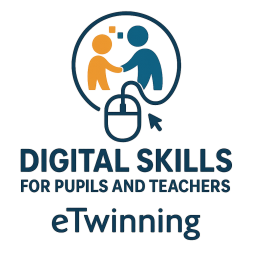AI Masters
As a teacher at the Educational Institutions Complex, I work with students facing various difficulties and educational challenges (including students with Down syndrome, Asperger's, Tourette's, partial paralysis, blindness or visual impairment, etc.). I noticed that my students struggled significantly with writing short texts in both Polish and foreign languages. To help them, I decided to leverage artificial intelligence to tailor the format and method of learning to their specific educational needs.
Using AI Dungeon, we generated unique story scenarios that stimulated students' imaginations while allowing them to work selectively and gradually on their writing challenges. As a result, our students created incredible multi-page stories independently, even though they had previously been unable to write longer texts without a teacher’s help. This project not only developed students' creativity and storytelling skills but also provided a platform for intercultural collaboration and exchange that was previously inaccessible to them.
Final Products of the Project
The final outcomes of the project, including storybooks/flipbooks, audiobooks, and films, were created through students' collaborative efforts. Through a process of passing prompts from one school to another, students worked together to develop a longer narrative. They contributed ideas, expanded the storyline, and wrote sections of the story, creating a coherent and engaging plot.
After completing the collaborative writing phase, the stories were translated into students’ native languages, allowing all students to understand the final versions. With translated stories in hand, each student had the opportunity to contribute to the creation of personalized books and films. This involved designing book covers, formatting text, and selecting illustrations generated using AI tools. The students' efforts led to the creation of books tailored for their deaf peers, audiobooks for blind students, and films/flipbooks for those requiring additional audiovisual stimuli. The project aimed to address the needs of all our students.
Project Goals
- Improve students' ability to write short texts in a foreign language using AI Dungeon.
- Enhance students' skills in creating descriptions in English using AI image-generation tools such as Midjourney, Crayon, and DALL-E.
- Develop students' creativity and storytelling skills.
- Break down barriers for students with special educational needs.
- Increase students' digital competencies, especially in AI.
- Raise awareness of AI's benefits and risks, particularly in recognizing AI-generated content.
- Create materials adapted to students with special educational needs.
- Establish a platform for intercultural collaboration and exchange among students from different countries.
Project Activities
- Using AI to generate unique story scenarios, stimulating students’ imagination and enabling selective work on parts of the story.
- Collaborative international storytelling, where students worked in teams to create extended narratives.
- Using AI to generate images based on story descriptions.
- Creating music using AI (AIVA).
- Producing audiobooks with AI-generated narration (Uberduck).
- Combining audiobooks, AI-generated images, and AI-composed music into films uploaded to YouTube.
- Translating stories into students' native languages.
- Creating personalized books and flipbooks (in both native and foreign languages) for students with different educational needs.
Project Outcomes
- Students, who had previously struggled with writing, created remarkable multi-page stories.
- The project enhanced students' creativity and storytelling skills.
- Students had the opportunity to collaborate with peers from different countries.
- The project resulted in personalized books and films that addressed students' educational needs.
- The initiative demonstrated that AI can be an effective tool for supporting students with various challenges.
Cultural and Educational Integration
The project focused on improving students' writing skills in both native and foreign languages across various literary genres (horror, fantasy, cyberpunk, spy stories). The collaboration between students from different countries involved writing, translating, and publishing personalized books and films.
Key thematic aspects of the project:
- Creativity & Storytelling: Encouraging students to develop narratives in different genres.
- Digital Competence: Teaching students to use AI tools for creative and educational purposes.
- Breaking Educational Barriers: Providing equal opportunities for students with different needs.
- Cultural Exchange: Connecting students from diverse backgrounds through collaborative storytelling.
- AI Awareness: Educating students about the advantages and potential risks of AI.
International Collaboration & Technology Use
The project connected students from Poland, Lithuania, Hungary, Turkey, and Portugal.
Communication and material sharing primarily took place on Facebook (AI Masters – eTwinning Project Group) and Google Drive due to technical challenges with the official eTwinning platform (ESEP).
Key tools and platforms used:
- AI Writing & Storytelling: AI Dungeon
- AI Image Generation: Midjourney, DALL-E, Crayon
- AI Audio & Music: Uberduck (narration), AIVA (music composition)
- Collaboration & File Sharing: Facebook, Gmail, Google Drive, Padlet, Google Docs
- Publishing & Media Sharing: FlipHTML5 (flipbooks), SoundCloud (audiobooks), YouTube (videos)
Evaluation & Impact
The project successfully met its goals, with 85% of students reporting improved writing skills and 95% stating that the project enhanced their creativity. Additionally, Polish students' final exam results indicated that participation in the project led to higher-than-expected outcomes.
The initiative highlighted AI's educational potential while also raising awareness of AI-generated misinformation (e.g., fake news). Regular surveys, observations, and meetings with participants ensured ongoing evaluation and improvement of the project.
Future Applications & Sustainability
The project model is repeatable and can be implemented by other schools with minimal resources. It has been shared as a teaching scenario (Stories with AI) on the eTwinning platform. The project was also presented in various teacher training sessions and conferences on AI in education.
For access to the project materials, visit:
- Flipbooks:FlipHTML5
- Audiobooks:SoundCloud
- Videos:YouTube Playlist
- Collaboration & Materials:Google Drive | Padlet






